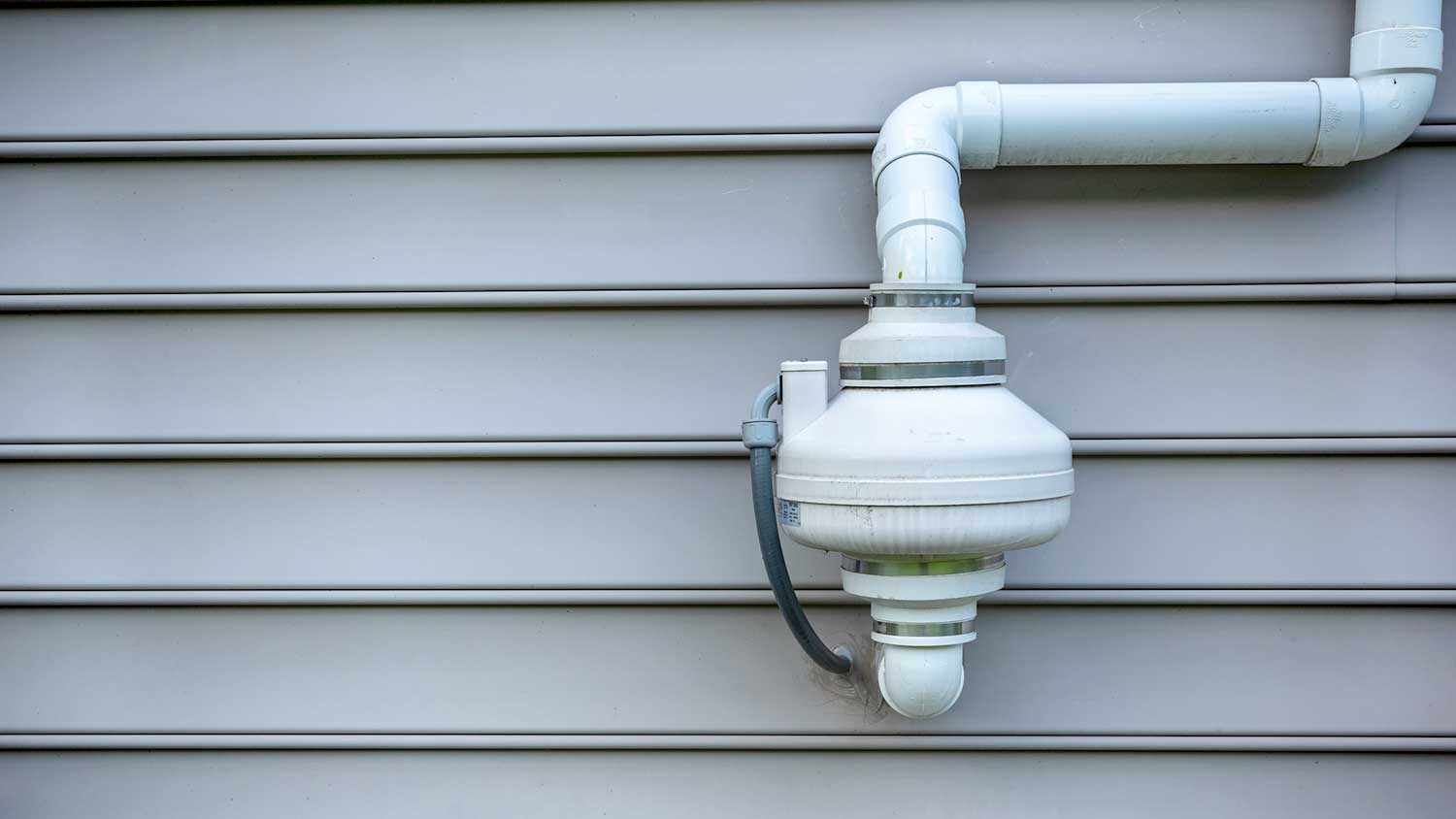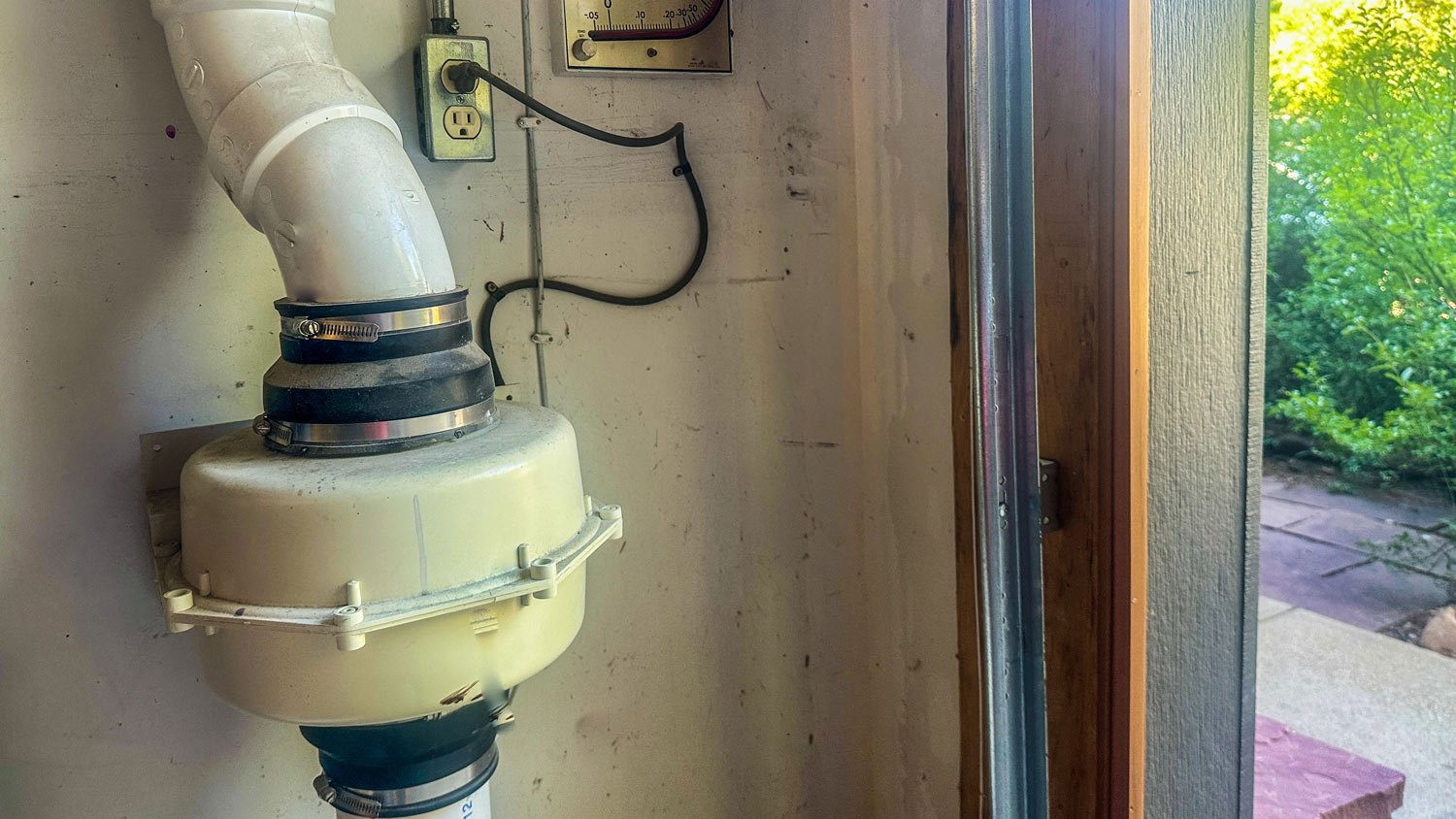
Discover the average indoor air quality testing cost, what impacts pricing, and how to budget for healthier air in your home.
Radon testing costs average $421, with a standard range from $100 to $1,200. Factors such as test type, home size, and location affect your total. Get a clear estimate before you test.


Radon testing detects dangerous levels of radon gas in your home.
Test type and home size are the driving factors that affect your total radon testing costs.
Professional testing costs $30 to $75 per hour, but offers more accuracy than DIY kits.
Regular testing helps protect your family’s health and improves indoor air quality.
Retesting may be needed after mitigation or renovations.
This article was created using automation technology and thoroughly fact-checked and edited by an Angi Editor in accordance with our AI policy.
The cost of radon testing is a key consideration for homeowners concerned about indoor air safety. On average, radon testing costs $421, with most homeowners spending between $146 and $713. DIY kits start as low as $100, while professional testing can reach higher prices depending on your home’s size and location.
Testing for radon helps identify hidden risks, supporting a healthier home. Some digital monitors may require calibration, adding to the overall cost. Labor for professional testing is often included as a flat fee, but some pros charge $30 to $75 per hour.
Understanding the factors that impact radon testing costs helps you plan and budget more effectively. Let’s walk through the key factors that shape your total price.
The type of radon test you choose is one of the biggest drivers of cost. DIY kits come in several forms, such as short-term, long-term, and digital monitors. Professional testing uses either passive or active systems, often providing more precise results.
Short-term DIY kits are affordable, but professional tests offer higher accuracy and are recommended for real estate transactions or when you need official documentation. Digital monitors can be reused but may require calibration fees. Here’s how costs compare by test type:
| Test Type | Description | Average Cost |
|---|---|---|
| DIY short-term | Charcoal or liquid scintillation kits are used for 2–7 days | $10–$40 |
| DIY long-term | Alpha track or electret kits used for 90+ days | $25–$60 |
| DIY digital | Electronic monitors for ongoing readings | $100–$250 |
| Professional | A certified pro uses an active or passive device | $150–$700 |
The size of your home can significantly impact the cost of radon testing. Larger homes often require multiple kits or devices to test different areas, such as basements, crawl spaces, and upper floors. Multi-level or multi-unit properties can expect higher costs due to the need for more equipment and time.
| Home Size/Type | Description | Average Cost |
|---|---|---|
| Small home (1,200 sq. ft.) | Single kit, single level | $150–$300 |
| Medium home (2,500 sq. ft.) | Two kits or multi-level testing | $300–$500 |
| Large home (4,000+ sq. ft.) | Multiple kits, multi-unit or multi-level | $500–$700 |
How often you test for radon affects your long-term costs. One-time tests are common, but regular testing every two to five years is recommended, especially after renovations or mitigation. Some pros offer discounted packages for scheduled repeat testing, which can lower your average cost over time.
If you’ve installed a radon mitigation system or completed major remodeling, retesting ensures your home remains safe. Frequent testing can add up, but it’s a small investment compared to health risks.
The type and quality of materials used for radon testing make a difference in both price and reliability. DIY kits use charcoal, alpha track, or digital monitors. Professional testers often use higher-grade equipment for greater accuracy.
Digital monitors are more expensive upfront, but can be used repeatedly. However, they may need periodic calibration, which adds to your total cost. Here’s a look at how materials influence radon testing cost:
| Material/Kit Type | Description | Average Cost |
|---|---|---|
| Charcoal canister | Disposable, short-term DIY kit | $10–$30 |
| Alpha track detector | Long-term DIY kit, measures over months | $25–$60 |
| Digital monitor | Electronic, reusable, needs calibration | $100–$250 |
| Pro-grade equipment | Used by certified testers, higher accuracy | Included in service |
Professional radon testing involves skilled labor. Certified radon testers, home inspectors, or environmental specialists conduct the test, set up equipment, collect samples, and provide an official report. Most charge a flat fee, but some use hourly rates between $30 and $75 per hour, depending on your region.
Service fees include setup, analysis, and reporting. Additional charges may apply for expedited results, travel to remote areas, or after-hours appointments. Urban areas or regions with high demand may see higher labor rates.
Your geographic location influences the cost of radon testing. Homes in high-risk or high-demand areas often command higher prices, whereas rural locations may incur additional travel fees. State regulations and cost of living also play a role.
Within your home, the area being tested—such as a basement, crawl space, or upper floor—can affect the number of kits or devices needed. Professional testing costs vary regionally, with some states offering subsidies or requirements that impact pricing.
Tipping is not standard practice for radon testing professionals. If you feel your tester provided exceptional service, a tip is appreciated but not expected. Positive reviews or referrals are excellent ways to show appreciation and support your local pros.
Regular radon testing is key to maintaining a healthy indoor environment. Most experts recommend testing every two to five years. Homeowners should also test after any major renovations, changes to the HVAC system, or the installation of a radon mitigation system.
Winter is an ideal season for testing, as closed windows and doors can produce higher, more accurate readings. In many states, radon testing is required during real estate transactions. Following recommended intervals helps you catch changes early and manage the long-term cost of radon testing.
Some situations require additional testing or services, which can increase your overall cost. Retesting after mitigation or remodeling is important to confirm safety. Continuous radon monitors, which track levels over time, can cost $100 to $250.
Lab analysis fees for mailed-in kits range from $10 to $40, with expedited results adding $20 to $50 to your bill. Discounts are sometimes available for multi-unit or multi-location testing. If your test reveals elevated radon, follow-up consultations or mitigation assessments can cost $100 to $200.
Both DIY kits and professional services have their own cost structures and benefits. DIY radon testing is affordable, but accuracy depends on following instructions closely. Kits cost $10 to $60, with possible additional charges for shipping and lab analysis.
Professional testing is more expensive, with service fees ranging from $150 to $700. These fees encompass setup, sample collection, analysis, and a comprehensive report, providing peace of mind and ensuring compliance for real estate or legal purposes. While DIY testing can save money, hiring a local radon remediation pro ensures accurate results and reduces the risk of user error.
| Method | Total Cost Range |
|---|---|
| DIY | $10–$100 |
| Professional | $150–$700 |
Here are a few helpful ways to reduce the cost of radon testing:
Purchase test kits in bulk or during sales to lower per-test costs.
Use local health department or state radon program discounts for free or reduced-price kits.
Schedule professional testing during off-peak seasons for better rates.
Combine radon testing with other home inspections to save on service fees.
Retest only as recommended to avoid unnecessary expenses.
Home is the most important place on earth, which is why Angi has helped more than 150 million homeowners transform their houses into homes they adore. To help homeowners with their next project, Angi provides readers with the most accurate cost data and upholds strict editorial standards. We extensively research project costs to develop the pricing data you see, so you can make the best decisions for you and your home. We rely on reputable sources, including the U.S. Bureau of Labor Statistics, academic journals, market studies, and interviews with industry experts—all to ensure our prices reflect real-world projects.
Want to help us improve our cost data? Send us a recent project quote to [email protected]. Quotes and personal information will not be shared publicly.
From average costs to expert advice, get all the answers you need to get your job done.

Discover the average indoor air quality testing cost, what impacts pricing, and how to budget for healthier air in your home.

Get clear answers on how much radon remediation costs, including average prices, key cost factors, and tips to save money on your home’s radon mitigation.

Radon is a gas that you can't see or smell and is harmful to your health. If your home has radon, you need to know who installs radon mitigation systems.

Can a homeowner install a radon mitigation system? While some parts of the project are fine for DIY, you should leave the meat of the task to a licensed professional.

Radon is a radioactive gas that can enter a home from the ground. Prepare yourself for mitigation by answering these questions before hiring a pro.

Radon can seep into your home through cracks and small openings. Here's how to get rid of radon and why you need to do it.